
While working with FixThePhoto’s German team and spending countless days at ski resorts, I realized the need for proper ski headphones. My AirPods Pro struggled in freezing temperatures, and their controls were impractical with gloves. This inspired me to find headphones designed for skiing, built to withstand extreme conditions with durability and ease of use.
Motivated to tackle these alpine challenges, my colleague and I selected several options for the test in real skiing conditions. After lots of trial and error, I’ve compiled a list of the best headphones for skiing that are reliable, stylish, and work great for any adventure.

|
SHOKZ OpenRun
Our Choice
|
CHECK PRICE → | |

|
Wildhorn Alta
Glove-Ready
|
CHECK PRICE → | |

|
Outdoor Tech Chips 3.0
Comfortable
|
CHECK PRICE → |
We tried out most of these headphones on the slopes of Berchtesgaden and Garmisch-Partenkirchen, both known for their tough trails and changeable weather. With my colleague Robin Owens, a tech expert, by my side, we considered all the details and created reliable reviews.
We tested these headphones in a variety of real-world skiing situations to see how they performed. This included dealing with cold, windy conditions on chairlifts, speeding down steep runs, and staying warm during long, cold days on the mountain. We also made sure they were easy to adjust while wearing gloves and checked if they worked well in crowded ski lodges, ensuring they could handle the unique challenges of a day on the slopes.

On a ski trip to Berchtesgaden with my friends, I brought along the SHOKZ OpenRun headphones, and they quickly became a hit. Everyone appreciated how the bone-conduction design allowed me to enjoy music while staying aware of my surroundings, which is crucial on busy slopes. By the end of the trip, most of my friends were eager to get a pair for themselves, proving how well these headphones fit into our alpine adventures.
The SHOKZ OpenRun headphones truly impressed me with their innovative open-ear design. Unlike traditional earbuds or over-ear headphones that block or muffle external sounds, the OpenRun allows you to remain fully aware of your surroundings. The lightweight and snug frame was another standout feature. It stayed secure on my head, even during sharp turns, quick movements, or bumpy rides down the mountain. Another highlight for me was the IP67 waterproof rating. This provided complete peace of mind, especially when the weather was snowy or rainy.
The sound quality, especially for headphones under $200, was amazing. The bone conduction technology provided clear and well-balanced sound while letting me stay aware of my surroundings. The only thing I didn’t like was that the bass wasn’t as strong as I’d like for some types of music. However, for skiing, staying safe and comfortable is much more important than enjoying heavy bass.
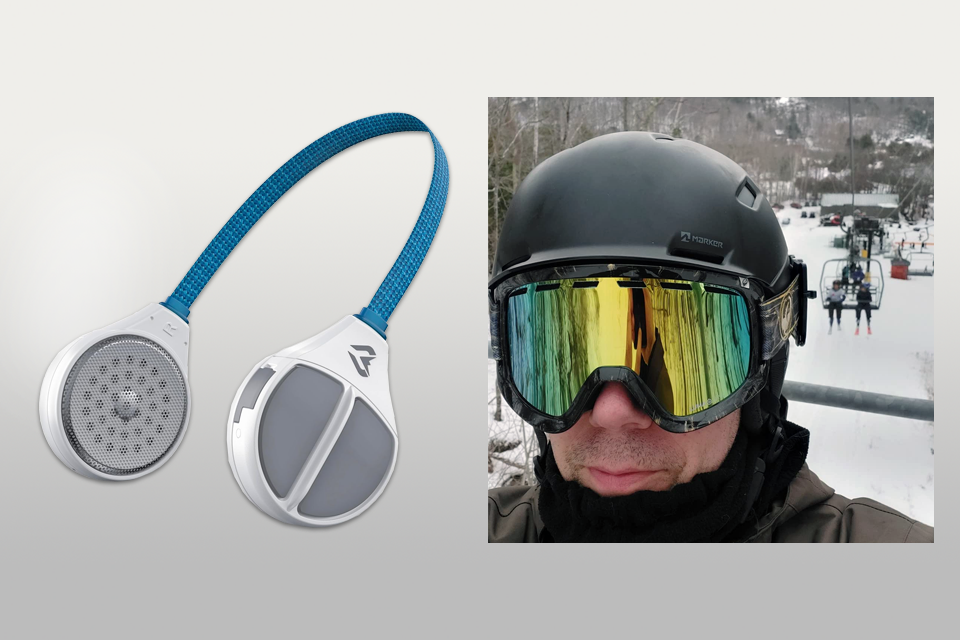
After reading so many great reviews for the Wildhorn Alta on Amazon, I decided to try them out. Skiers loved their practicality and sound quality, and I was curious if they were as good as people said. Spoiler alert: they were!
The Alta’s drop-in design made installation quick and easy, fitting securely in my ski helmet without shifting during movement. The sound quality impressed me with crisp highs and balanced bass, making my playlists sound great on the slopes. While they’re not the loudest, the volume was plenty for me, even at high speeds, all without compromising safety.
The glove-friendly controls were a standout feature. It took me a few attempts to learn the button layout, but once I did, adjusting the volume or skipping tracks became effortless, which is a big plus for skiers. Another upside s was the battery life; even after a full day on the slopes, there was still plenty of charge remaining. As for minuses, my friend Robin pointed out that the slightly thicker design might be a tight fit for helmets with smaller ear-pad spaces.

When my friend, a seasoned skier with years of experience on slopes across Europe, suggested I try her Outdoor Tech Chips 3.0 during our recent trip to Garmisch-Partenkirchen, I didn’t hesitate for a moment. The design of the Chips 3.0 immediately impressed me - it’s sleek, functional, and easy to use. I could quickly see why they’re so popular with skiers and snowboarders alike. The controls were intuitive, making it simple to adjust settings even in gloves without any hassle, and the sound quality was great, providing clear audio without blocking out important environmental sounds.
The Chips 3.0 fit perfectly in my helmet’s ear covers without feeling bulky. The sound was clear and balanced, with enough volume to enjoy music while staying aware of my surroundings. I also liked the tap controls - once I got the hang of them, they were easy to use, even with thick gloves.
The only downside is that the USB-C connector doesn't support fast charging, but this is not a big problem given their overall performance, especially for headphones under $300. From smooth descents to tougher trails, the Chips 3.0 consistently delivered a reliable and effortless performance, making it a top choice on my list of the best ski headphones.
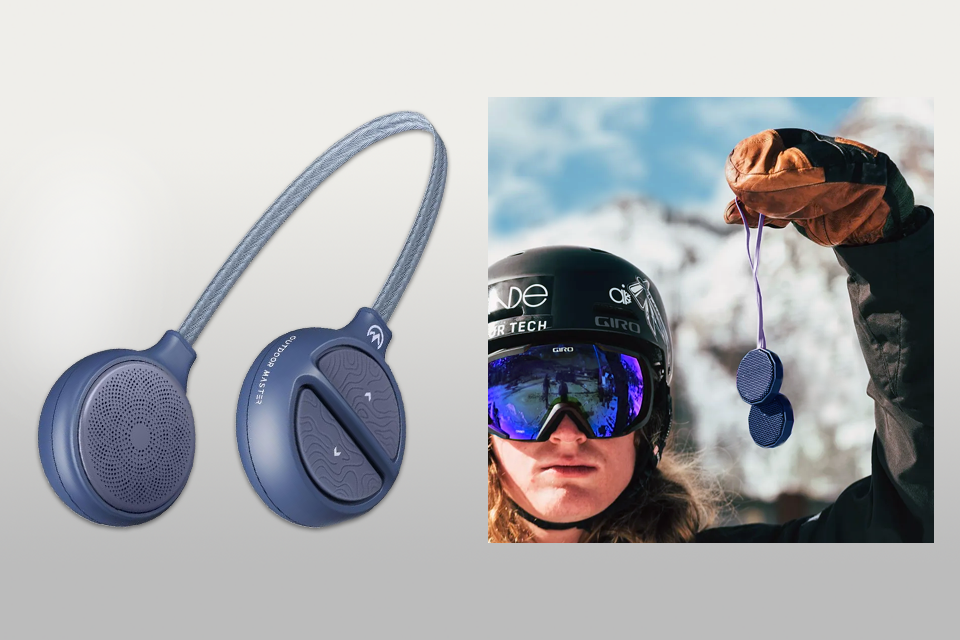
I’m usually doubtful about budget ski headphones, but Robin, who knows her tech, convinced me the OutdoorMaster BT01 was a great option. I decided to try them during our weekend in Garmisch-Partenkirchen, and from the start, I was impressed by how practical they were.
I loved how easily they fit into the earpad slots. The large, glove-friendly buttons were a game-changer - no need to remove gloves to skip tracks or adjust the volume! The sound quality isn’t as great as premium devices, but it’s perfect for enjoying background music while skiing. Plus, the battery endured the whole day on the slopes without any issues.
However, the auto-shutoff feature was too sensitive, turning on only in 5 minutes of inactivity. This was especially inconvenient when I paused the music to talk to friends during lift rides. The Micro-USB charging seemed a bit outdated, especially when compared to the more modern and faster USB-C options available today. However, this minor inconvenience didn’t overshadow the overall ease of use and solid performance of the BT01.
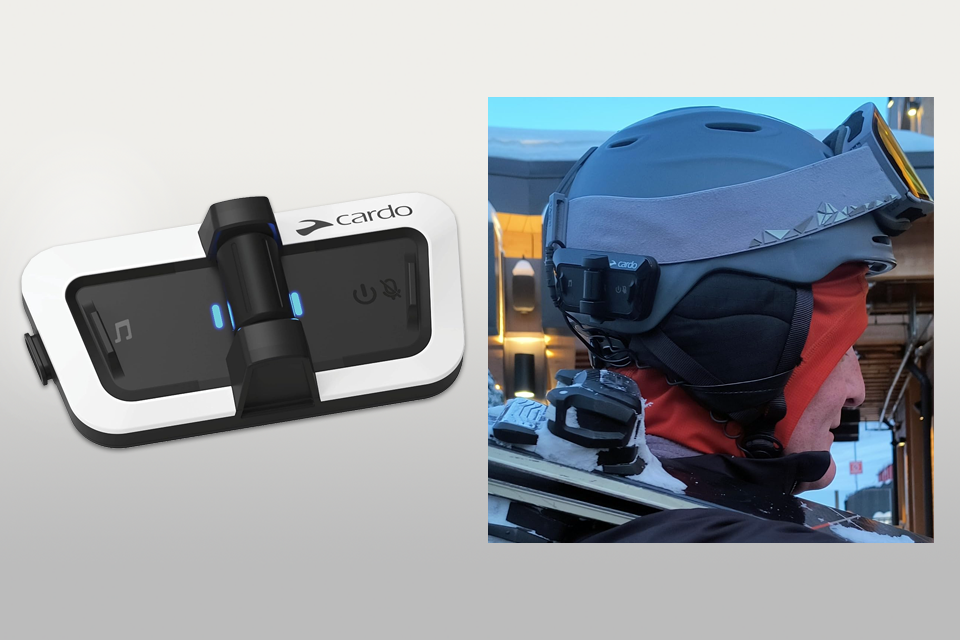
While skiing at Berchtesgaden, I noticed one of the staff members using the Cardo Packtalk Outdoor system, something I hadn’t seen before. Its compact design and sturdy build caught my attention, so I asked her about it. She explained that it allows for real-time communication, eliminating the need to shout across the slopes. To my surprise, she even let me try it out.
After pairing Packtalk Outdoor with my helmet and device, I could use it like headphones for iPod and enjoy background music while talking with friends. The voice commands worked surprisingly well, even with the wind. What really impressed me was how easily it stayed connected with the other units in our group, making it perfect for coordinating while running tough slopes.
The setup isn’t perfect. On the lift, the audio had a slight delay, creating a bit of an echo. Also, while the range is good, steep slopes or hills did sometimes weaken the connection.
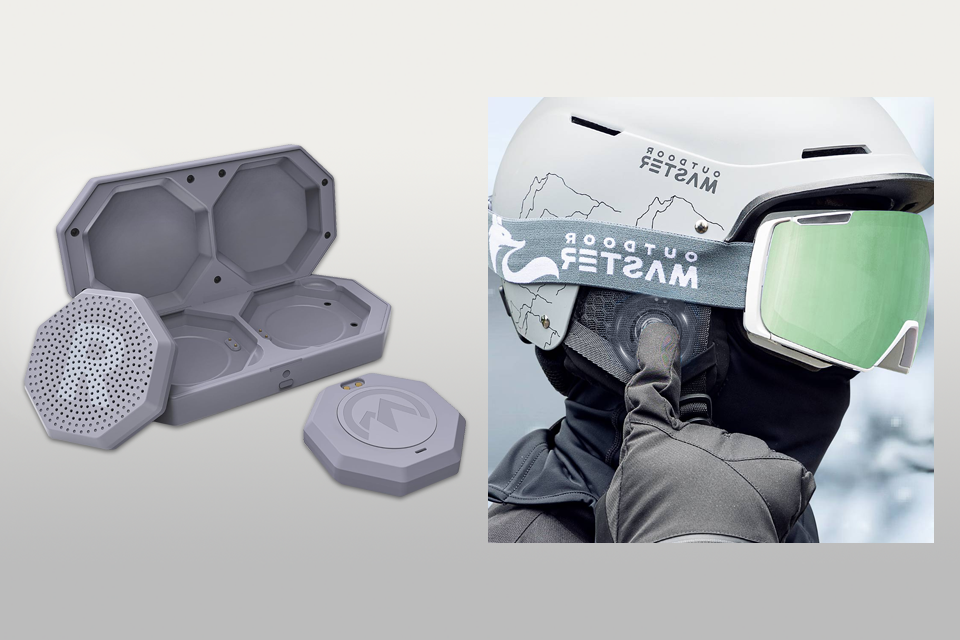
The MZ04-M from OutdoorMaster is great skiing headphones, though they come with a higher price and several upgraded features. After being impressed by their more budget-friendly model, the BT01, I wanted to see if the added cost would provide a noticeable performance improvement.
These headphones fit perfectly into my audio-ready helmet, and they felt more polished than any other model I’ve tried. The true wireless design made it easy to manage music and calls, even with my ski gloves on. The controls were intuitive and simple to use. A standout feature is the charging case. It’s both convenient for storage and ensures the headphones are always charged and ready to go.
One downside was the absence of a manual power-off option. To turn them off, you have to put them back in the charging case, which can be a hassle if you’re on the slopes and just want a quick break. Despite this small inconvenience, the MZ04 enhances your skiing experience with its practical design and overall ease of use - even if you need headphones for large head.

I had to include the Sena Snowtalk 2 to this list because they were the first ski helmet earphones I used when I started skiing in Germany. At that time, I was still learning about my gear and wanted something to help me stay in touch with friends on the slopes. Not only did these headphones work well for music and calls, but they also introduced me to the convenience of Bluetooth intercom.
The Sena Snowtalk 2 is ideal for keeping in contact with friends on the mountain, whether it's for coordinating runs or chatting during lift rides. The audio remains clear, even over long distances, something I confirmed while skiing the vast slopes of Berchtesgaden. Pairing with my phone was effortless, allowing me to enjoy music and answer calls without having to take off my helmet.
As for the downsides, the buttons, though responsive, can be tricky to use with gloves, especially when trying to turn off the intercom on the chairlift. I’ve also experienced a small delay in the intercom system, which could be annoying for those who are sensitive to even slight audio lags.

The Outdoor Tech Chips Ultra 2.0 aren’t as well-known as the Chips 3.0, mainly because they cost more. However, I got the chance to try these premium true wireless helmet speakers with our group of skiers.
The Ultra 2.0 stands out from the cheaper Chips 3.0 because it doesn’t have a wire between the speakers, making setup much simpler. Even in difficult conditions, the sound was clear, and the music and calls were easy to hear. I was also impressed by the bass, which added depth to my music without overpowering the surrounding sounds, something that’s important when skiing.
The performance is great, but the high price may not be worth it for casual skiers. Also, charging the headphones means taking both speakers out of the helmet, which can be a bit annoying. Still, for me, they set a high standard for comfort, ease of use, and sound quality on the slopes.
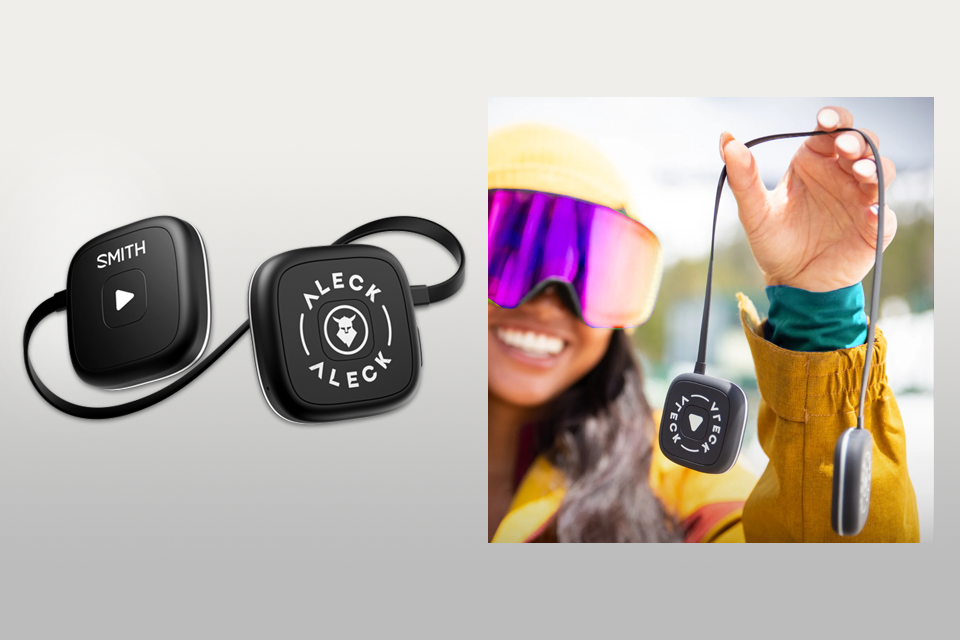
This year, I finally got the chance to try the ALECK Nunchucks, a pair of ski earphones my friends had been recommending every ski season. Even when Robin was on the other side of the mountain, these headphones kept us connected easily. The app-based communication worked seamlessly, adding an extra layer of convenience to our entire day.
Even at high speeds or in windy conditions, these headphones delivered crystal-clear sound. The 18-hour battery life stood out as another great feature, as we skied for the entire day, and they still had plenty of charge left.
Getting used to the controls took a little time. There are different tap sequences for each earbud, which felt tricky at the beginning. Another minor issue was that turning the headphones off occasionally triggered Siri or Alexa, which was somewhat frustrating.
To stay aware of your surroundings, many good headphones for snowboarding offer features like bone conduction technology or ambient sound modes. In busy areas, I recommend lowering the music volume, so you can hear other skiers or any potential hazards.
Most ski headphones are made to fit smoothly into helmet earpads without affecting comfort. However, it’s important to verify that the headphones are compatible with your specific helmet, as some models may not fit well or comfortably in all helmet styles.
Bone-conduction headphones are great for skiers who want to stay aware of their surroundings because they don’t cover your ears. However, they might not have as much bass or sound quality as regular in-ear or over-ear headphones. It comes down to whether you care more about safety or sound quality.
Listening at high volumes for long periods can cause hearing problems. To reduce the risk, choose headphones for ear health with volume-limiting features or keep the volume at a level where you can still hear surrounding sounds. It's also a good idea to pick models that provide clear sound even at lower volumes.
Many of these headphones are versatile and can be used for activities like biking, running, or other outdoor sports, as long as they fit well and suit your needs. Bone-conduction headphones are especially useful for sports where being aware of your surroundings is important.
At FixThePhoto, we focus on providing honest and in-depth reviews, especially for gear designed for unique environments. For this article, my colleague Robin and I tested each pair of headphones on multiple ski trips. We visited resorts like Berchtesgaden and Garmisch-Partenkirchen to ensure the products were suitable for real alpine conditions.
We prioritized sound quality above all. To evaluate audio performance, we used the headphones while skiing on various terrains and at different speeds, paying close attention to how well they handled wind noise and the sound of skis on snow. Whether listening to music or receiving intercom messages, our main focus was on how consistently clear and stable the audio remained.
We also assessed how easy it was to use the controls. Skiing with gloves can make it tricky, so we tested how well we could operate the buttons or touch controls without taking them off. Models that offered intuitive, glove-friendly controls got higher ratings.
Durability and battery life were also important factors to consider. We tested all the models in freezing temperatures and during extended ski sessions. We monitored the performance of the batteries throughout the day and checked whether the headphones still functioned after being exposed to snow, moisture, and accidental drops.
Lastly, we evaluated comfort and fit. Since snowboard headphones are built into helmets, we tested them during long runs and on chairlifts. It was important that they stayed secure and didn’t cause any discomfort. We preferred designs that were lightweight and slim, ensuring they didn’t affect the helmet’s fit.
We test ski headphones to make sure they can handle the challenges of skiing and snowboarding, offering great performance, ease of use, and durability.